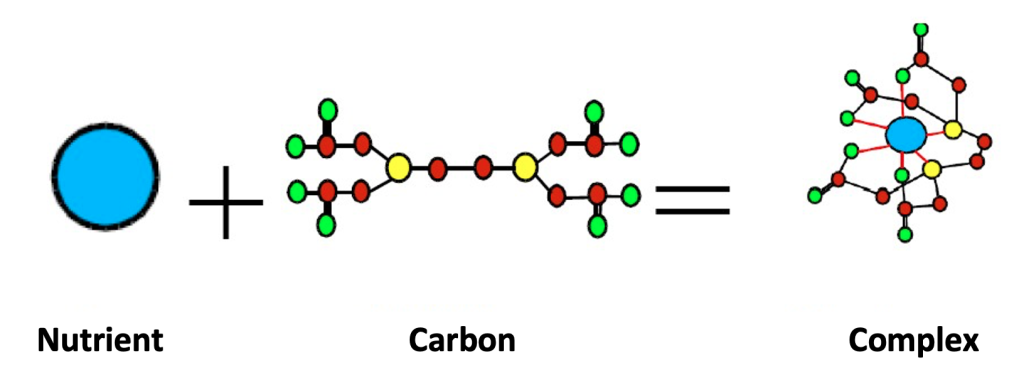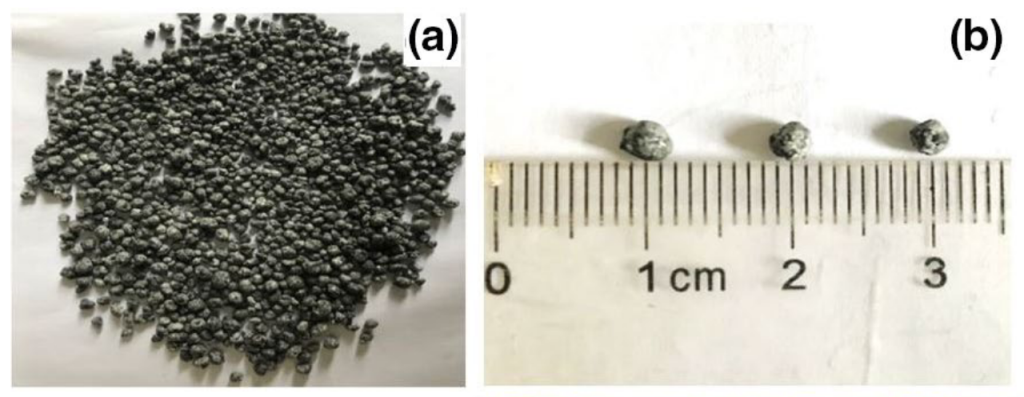Joel Williams, Integrated Soils
In part 1 of this article, we highlighted that both urease and nitrification inhibitors have a minor impact on soil biology but there remains some concern over the negative impact of urease inhibitors on the plants ability to take up and metabolise the urea form of nitrogen [N] – a favourable and efficient form of N for plant growth. Outside of these phytotoxicity concerns, synthetic inhibitors also have other drawbacks, including difficulties in application, cost, degradation, pollution and entry into the food system1,2. Beyond these chemical inhibitors, there are other compounds of interest that can bring similar benefits – naturally occurring, biological inhibitors and carbon-based compounds that can stabilise N inputs and slow the conversion of N to reactive and unstable forms.
Biological Inhibitors
We will discuss below the potential of humic substances to bind to and stabilise N inputs however they have also demonstrated both urease and nitrification inhibitory properties3–6, no doubt part of their modes of action. Additionally, a range of plant compounds (plant/tissue extracts) have also been identified – generally discussed in the context of decaying residues of cash or cover crops – but also, plant extracts such as garlic or aloe vera have demonstrated urease inhibition properties. All this said, it is plant root exudates that are currently a noteworthy emerging area of research into identifying novel biological nitrification inhibitors1,2. A potential pool of hundreds of compounds may have these properties and currently, five compounds exuded from sorghum (Sorghum bicolor), signalgrass (Brachiaria humidicola) and rice (Oryza sativa) have been identified; while inhibition has also been observed in wheat (Triticum aestivum) but the specific biochemical has not been identified2. Brassicas are of course well known nitrate accumulators7,8 but perhaps there is merit in including sorghum and rice in cover crop blends to support nitrogen retention.
C-based Inputs
C-based inputs that have demonstrated an ability to stabilise N include humic and fulvic acids, molasses, biochar, oil-based compounds and raw humates (Figure 1). Beyond C inputs, coating fertiliser granules with inorganic nutrients such as sulphur, ammonium thiosulphate, zinc or boron has also been demonstrated to induce a slow-release mechanism of the N.

Figure 1: C-based inputs such as biochar and humates help induce a slow-release fertiliser effect when combined with nutrients.
The mode of action of C-based inputs is really quite straight forward – rather than apply highly available and reactive N as simple ions in an inorganic form, by combining them with a C source, the C acts like a sponge to bind and complex the N into a larger C-N based molecule. Figure 2 depicts the complexing of a simple ion into an organically bound, larger molecule. The C atoms that bind to the N ultimately stabilise the N preventing volatilisation and/or conversion into nitrates and also prevents the leaching of nitrates due the highly charged surfaces of the C sponge that attaches to soil particles and keeps the complex in the root zone.

Figure 2: Including a carbon source with soluble nutrients forms a carbon-nutrient complex with greater stability.
By combining nitrogen inputs with humic and/or fulvic acids, studies have demonstrated reductions in ammonia volatilisation4–6,9,10, reductions in nitrous oxide emissions5,11, increases in soil ammonium3,5,9–12 and nitrate10,11 retention, increases in yield/biomass/plant growth11–16 and nitrogen use efficiency11–14,16. Even humates or the raw brown coals that humic and fulvic acids are typically extracted from have also been used to stabilise N and improve N retention in the soil17–19. Of course, even composts and manures contain a range of humic type substances which can also provide this benefit when these organic amendments are used in conjunction with conventional fertilisers – a best of both worlds approach.
Despite molasses having nowhere near as high exchange capacity as humic or fulvic acids, a study from Australia in sugarcane demonstrated that when combined with liquid fertiliser, molasses stimulated the soil biology to immobilise the nitrogen by consuming it along with the carbohydrates from the molasses. This essentially tied up the N within the living microbial biomass which created a slow-release mechanism for N release at a later date. This study demonstrated that the biology immobilised 18% of the nitrate within 2 hours and 95% of the nitrate by the fourth day of incubation20. This highlights the high digestibility (and biostimulant effect) of the C in molasses provides an alternative pathway for N stabilisation as compared the C sponge provided by humic substances that binds to the nutrient.
Lastly, the number of studies on biochar has truly exploded in recent years, it astounds me how many papers are coming out exploring the various benefits to this input. Whether it’s combining it with compost, fertilisers, biofertilisers, animal feed or direct soil application, biochar has great potential to be an invaluable input, providing the economics of use can stack up (which they don’t always at this stage). In relation to combining with fertilisers, biochar has demonstrated an ability to reduce nitrogen losses from the soil, improve nitrogen retention, increase nitrogen use efficiency and increase plant growth21–23.
In Practice
Carbon based inputs are most easily and effectively implemented with fluid fertilisers as the fully soluble C and N can easily bind together when in liquid suspension. Liquids can also be used to coat fertiliser prills, typically used at a rate of around 6-8 L of C source per tonne of fertiliser. Dry powders can also be used to coat or dust fertiliser granules such as depicted in Figure 3 using biochar. Although it is more effective to physically combine the C and nutrients in the same application, it is still possible in a more general sense to apply this concept in an integrated manner wherever organic amendments are used in conjunction with fertiliser inputs. The various strategies that can be used to build soil C ultimately will help provide a C sponge for stabilisation in the soil. That said, the argument for additionally including external C sources with fertiliser inputs is so that the soil C can be preserved whilst using/cycling the added C. In closing, synthetic inhibitors are powerful and targeted tools to help minimise nitrogen losses and I broadly support their judicious use in highly leaky and vulnerable contexts. However, C-based inputs provide additional soil health related benefits beyond N stabilisation and without concerns of plant toxicity. Consequently, C-based inputs have my vote due to the multifunctionality and multiple benefits that their use can bring over and above N stabilisation.

Figure 3: Example of C coated fertiliser granules.
References
1. How Plant Root Exudates Shape the Nitrogen Cycle (2017). doi.org/10.1016/J.TPLANTS.2017.05.004
2. Nitrogen transformations in modern agriculture and the role of biological nitrification inhibition (2017). doi.org/10.1038/nplants.2017.74
3. Understanding the Role of Humic Acids on Crop Performance and Soil Health (2022). doi.org/10.3389/FAGRO.2022.848621/BIBTEX
4. Volatilization of ammonia from urea-ammonium nitrate solutions as influenced by organic and inorganic additives (1990). doi.org/10.1007/BF01063338
5. The effects of humic acid urea and polyaspartic acid urea on reducing nitrogen loss compared with urea (2020). doi.org/10.1002/jsfa.10482
6. Inhibition of urease activity by humic acid extracted from sludge fermentation liquid (2019). doi.org/10.1016/j.biortech.2019.121767
7. Cover Crops Reduce Nitrate Leaching in Agroecosystems:A Global Meta-Analysis (2018). doi.org/10.2134/jeq2018.03.0107
8. Cover crop crucifer-legume mixtures provide effective nitrate catch crop and nitrogen green manure ecosystem services (2018). doi.org/10.1016/j.agee.2017.11.017
9. Reduction of ammonia loss by mixing urea with liquid humic and fulvic acids isolated from tropical peat soil (2009). doi.org/10.3844/AJAB.2009.18.23
10. Reducing Ammonia Loss from Urea by Mixing with Humic and Fulvic Acids Isolated from Coal (2009). doi.org/10.3844/ajessp.2009.420.426
11. Effects of Humic Acid Added to Controlled-Release Fertilizer on Summer Maize Yield, Nitrogen Use Efficiency and Greenhouse Gas Emission (2022). doi.org/10.3390/agriculture12040448
12. The Combined Application of Urea and Fulvic Acid Solution Improved Maize Carbon and Nitrogen Metabolism (2022). doi.org/10.3390/agronomy12061400
13. Carbon-Based Slow-Release Fertilizers for Efficient Nutrient Management: Synthesis, Applications, and Future Research Needs (2021). doi.org/10.1007/s42729-021-00429-9
14. Co-addition of humic substances and humic acids with urea enhances foliar nitrogen use efficiency in sugarcane (Saccharum officinarum L.) (2020). doi.org/10.1016/j.heliyon.2020.e05100
15. Greenhouse pot trials to determine the efficacy of Black Urea compared to other nitrogen sources (2009). doi.org/10.1080/00103620802697988
16. Humic Acids Incorporated into Urea at Different Proportions Increased Winter Wheat Yield and Optimized Fertilizer-Nitrogen Fate (2022). doi.org/10.3390/agronomy12071526
17. A slow release brown coal-urea fertiliser reduced gaseous N loss from soil and increased silver beet yield and N uptake (2019). doi.org/10.1016/j.scitotenv.2018.08.145
18. Hybrid brown coal-urea fertiliser reduces nitrogen loss compared to urea alone (2017). doi.org/10.1016/j.scitotenv.2017.05.270
19. Nitrogen Dynamics in Soil Fertilized with Slow Release Brown Coal-Urea Fertilizers (2018). doi.org/10.1038/s41598-018-32787-3
20. Harnessing microbial ‘slow-release’ to improve fertiliser profitability and sustainability (2018).
21. Assessing the impacts of biochar-blended urea on nitrogen use efficiency and soil retention in wheat production (2022). doi.org/10.1111/gcbb.12904
22. Biochar bound urea boosts plant growth and reduces nitrogen leaching (2020). doi.org/10.1016/j.scitotenv.2019.134424
23. Co-application of biochar and nitrogen fertilizer reduced nitrogen losses from soil (2021). doi.org/10.1371/journal.pone.0248100

